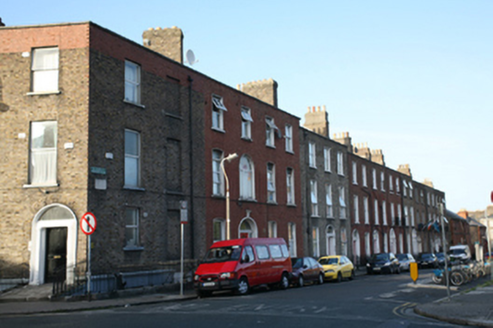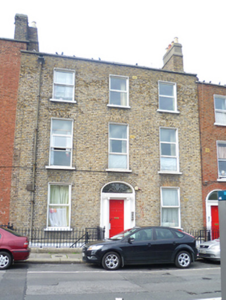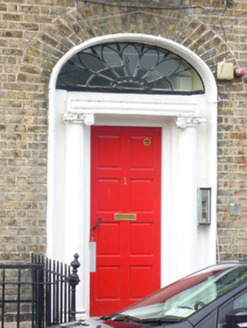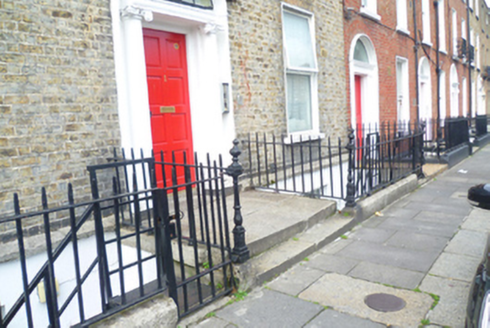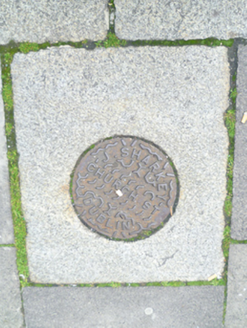Survey Data
Reg No
50010749
Rating
Regional
Categories of Special Interest
Architectural, Artistic
Original Use
House
In Use As
Apartment/flat (converted)
Date
1825 - 1830
Coordinates
315869, 235660
Date Recorded
07/09/2011
Date Updated
--/--/--
Description
Terraced three-bay three-storey house over exposed basement, built c.1828. Now in multiple occupancy. Pitched slate roof behind parapet wall having granite coping and two shared brick and rendered stepped chimneystacks to both party walls with clay pots. Replacement downpipe with lead hopper breaking through parapet wall. Yellow brick walls laid in Flemish bond to granite plinth course and rendered basement. Gauged brick flat-arched window openings with rendered reveals, painted masonry sills and replacement uPVC windows. Gauged brick three-centred arched door opening with moulded masonry surround and painted masonry Ionic doorcase with replacement timber panelled door flanked by engaged Ionic columns on plinth blocks supporting panelled lintel cornice with original decorative leaded fanlight. Door opens onto granite platform, bridging basement area, enclosed by wrought-iron railings and pair of cast-iron corner posts to two granite steps to street. Wrought-iron railing on granite plinth wall encloses basement area with matching gate and steel steps giving access to basement. Original cast-iron coal-hole cover set in granite slab to pavement.
Appraisal
This double-fronted brick house forms part of a terrace of buildings sharing fenestration alignment and parapet height, laid out on the north side of Sherrard Street Upper by Thomas Sherrard as part of the Wide Streets Commission in the 1820s. Set among a terrace of two-bay houses, this three-bay house stands out for both its size and partially intact doorcase and railings, adding to the overall variety and interest of the streetscape. The symmetry of the facade is articulated by the central location of the doorcase, to which a spoked fanlight adds particular decorative interest. The importance of the streetscape is increased by the quality of the largely intact granite street paving slabs and kerbs, cast-iron lamp standards and surviving coal-hole covers, as well as a rare original benchmark.
